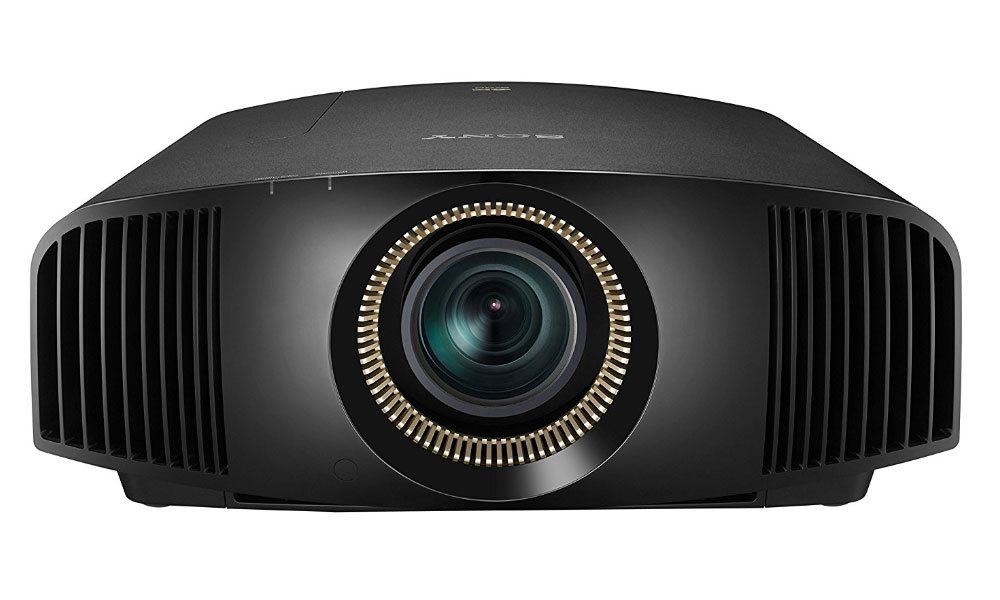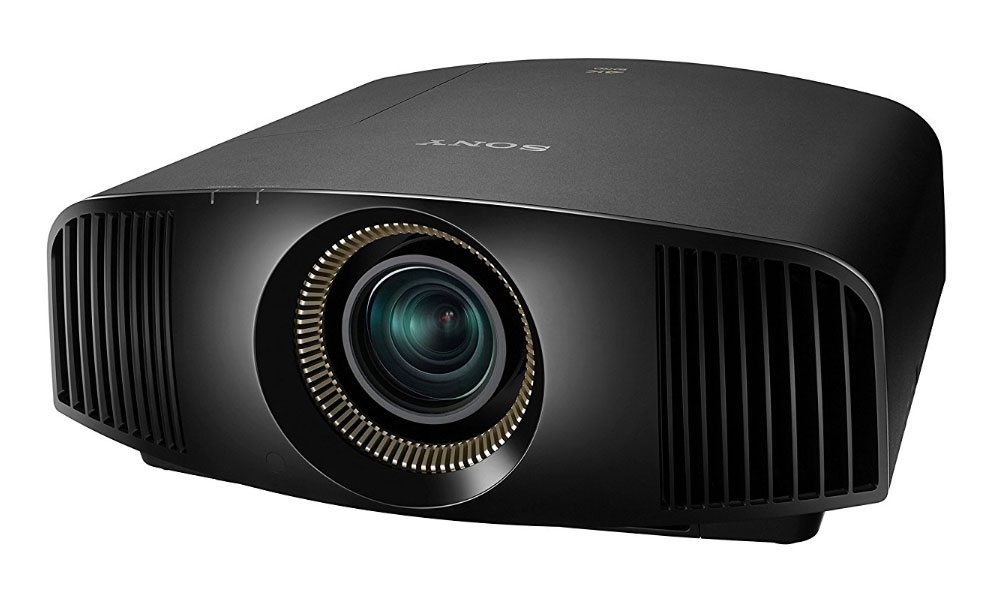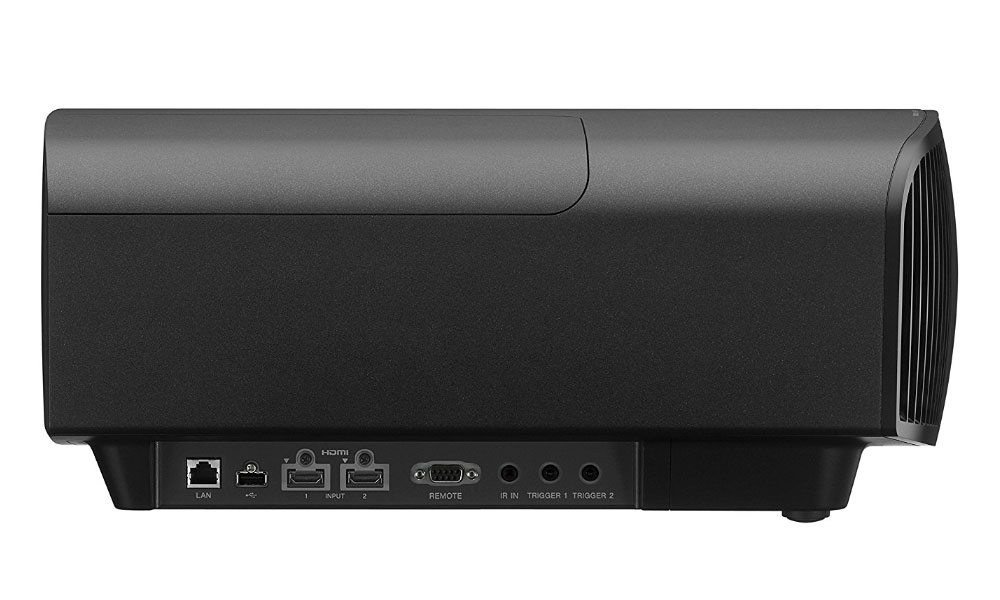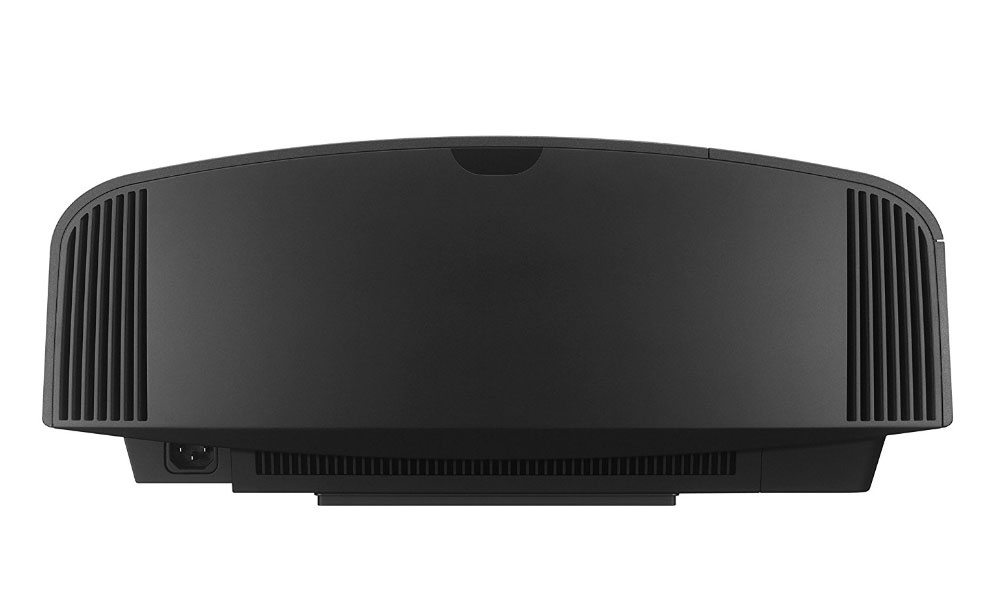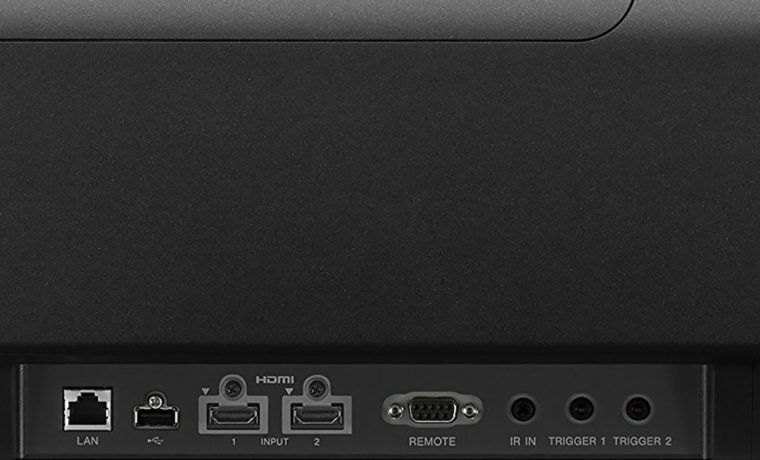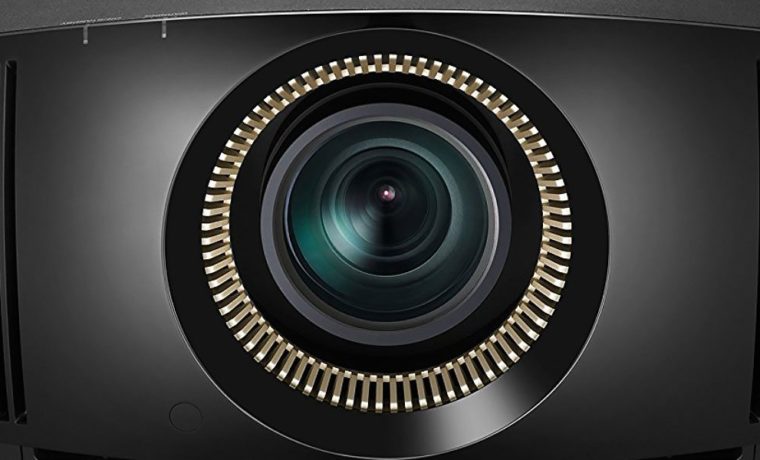The Sony VPL-VW385ES is a fairly-largish home theater projector. It is in the same size class as the JVCs, and the BenQ HT8050 and HT9050, a size larger than the Epson 5040UB and 6040UB, and a couple of sizes larger than the typical BenQ, Optoma, and most of the other brands of DLP projectors.
It is finished in dark gray/black, a combination of coarse and smooth finishes. It should disappear nicely into your ceiling it is painted dark. If you have a light colored ceiling, then it will just be a fairly large, but clean and impressive looking projector that will impress your friends, but only a fraction as much they will be impressed once the projector is fired up and they get to see the picture quality.
The front is “clean” – only the recessed lens, and an IR sensor for the remote control. The top only has the Sony logo (and you can see the edges of the door for the lamp compartment. Now that I think about it, the whole projector has a very clean, minimalistic look. If gazing at the VW385ES from the front, the side on the right has all the inputs and connectors (there aren’t that many), but they are located just up from the bottom, all in a row, and recessed nicely.
On the opposite side you’ll find the control panel, which, again, like the other Sony home theater projectors, consists of a number of very small buttons mounted along the edge (right above the bottom recessed area). The buttons are designed to blend in, so you might not even notice them from four or five feet away, unless you were paying attention!
The back only has the power cord receptacle, which is also recessed – this time by several inches. As I said – a very minimalistic look. No offense to small $1,500 4K UHD projectors, but this Sony physically makes them all pretty much look like fancy electronic toys, while this Sony, by comparison, looks downright serious – which, of course, it is.

